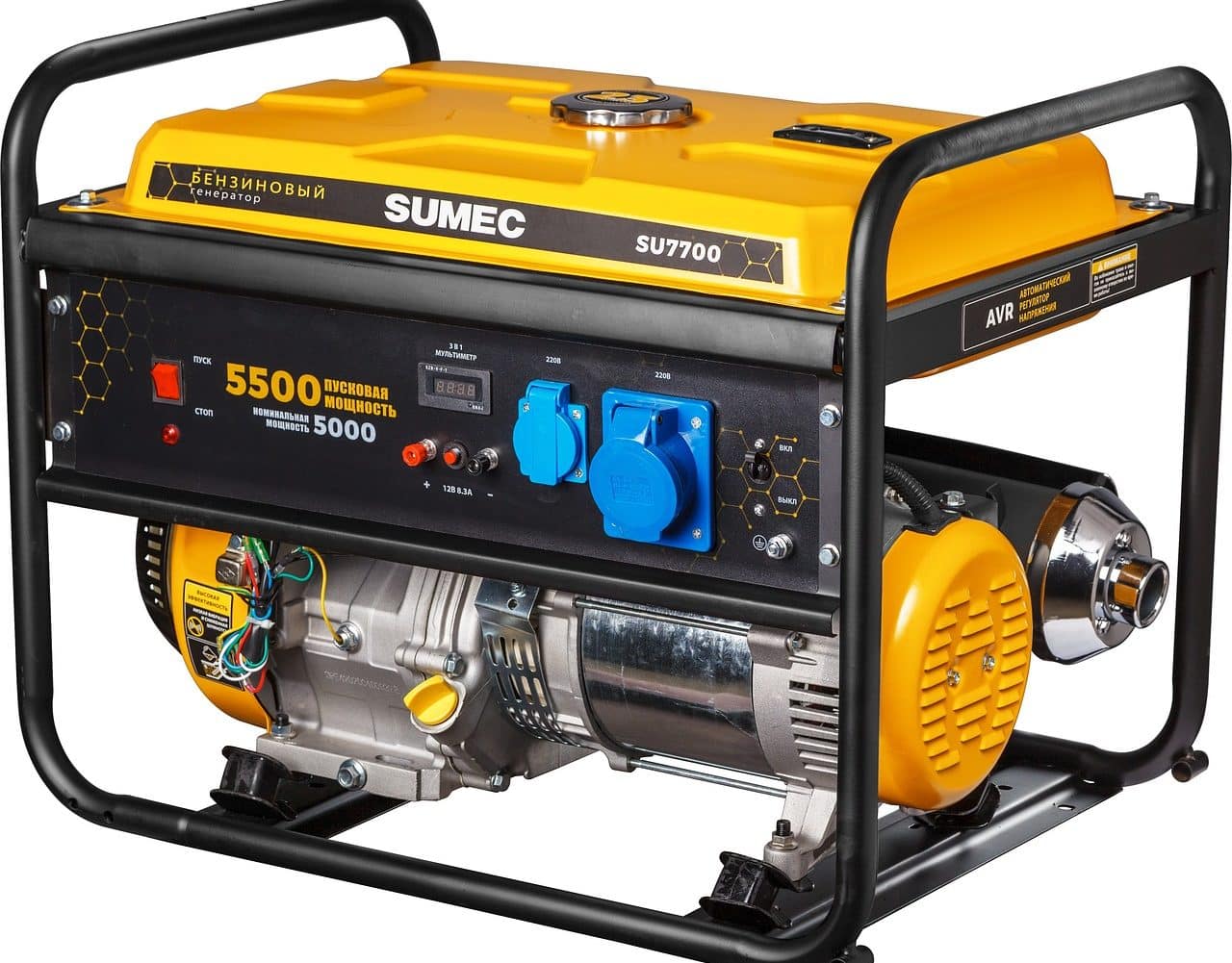
The electric generator converts mechanical energy into electrical energy.
A generator is something that generates (that is, produces, encourages or creates) or a device that produces energy. It is a term that can be used as an adjective or noun and has its etymological root in the Latin word generātor .
Electric generator
The electric generator is a device capable of producing energy or force . It allows mechanical energy to be converted into electrical energy by preserving a potential difference between two terminals or poles based on the magnetic field that acts on the conductors.
Generators have a rotating area, known as the rotor , and a static sector (the stator ). When put into operation, one part acts as an inductor , generating a magnetic flux, while the other acts as an armature , transforming it into electricity .
It can be said that generators carry out the inverse process to that carried out by motors . While motors transform electrical energy into mechanical energy, generators do the opposite.
Rotating electric machines that have rotating and reversible parts are capable of working as generators or motors. This means that they can convert mechanical energy into electrical energy or electrical energy into mechanical energy depending on their configuration .
Alternator
The alternator is a device used to generate alternating current (AC). It is a generator designed to convert mechanical energy into electrical energy . Its operation is based on electromagnetic induction, a principle discovered by the British scientist Michael Faraday that consists of rotating a coil of wire within a magnetic field.
This electromechanical device consists of a number of key components, including:
- rotor : also known as the rotating magnetic field , it is the part that rotates and creates the magnetic field;
- stator : is the stationary part of the alternator that contains the wire coils in which the electric current is induced;
- Rectifier – In automotive and many other applications, it is used to convert the alternating current produced by the alternator to direct current (DC), which is the form of electrical energy used to charge the battery and power vehicle electrical devices.
Alternators are used in a wide variety of applications, including generating electrical power in automobiles, trucks, airplanes, boats, and in stationary generators to supply electricity in buildings, factories, and other facilities. Its power generation capacity is measured in watts (W) or kilowatts (kW) and varies depending on the application.
They must be maintained periodically to ensure proper functioning. This may include checking the tension of the drive belt (if equipped), inspecting electrical connections, and replacing worn parts.
in geometry
In the field of geometry , the term generator is used to refer to a geometric figure or a set of geometric elements that, when moved or combined in a certain way, create a larger or more complex shape or structure. These generators are essential in building and understanding more complex geometric shapes.

In geometry, a generator allows you to create structures such as polygons, curves or fractals.
Let's look at some common geometric generators:
- polygon generator – A polygon can be constructed using a line segment that moves in space and leaves a footprint as it moves;
- solid generator : to create three-dimensional geometric solids, such as cubes, prisms, cones or pyramids, flat polygons are used that move in space and rotate around axes;
- curve generator – by moving a straight line or simple geometric figure along a specific path;
- fractal generator – simple geometric rules that are applied repeatedly to build complex fractal structures;
- mirror generator : In constructing symmetrical geometric figures, such as letters of the alphabet or tile patterns, a mirror generator is used to create symmetry by reflecting a part of the figure across an axis;
- transformation generator – Translations, rotations, and reflections, for example, are used as generators to create modified copies of an original figure. These transformations can be applied to create patterns and symmetries.
